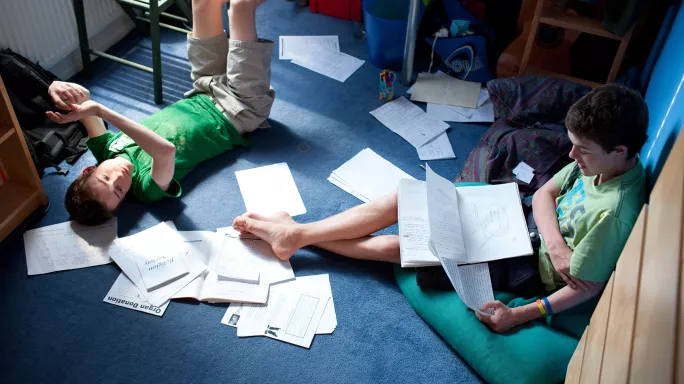Sitting practice GCSE papers under timed conditions is a great way for students to revise. But how can teachers make sure that they, and their students, get the most out of this exercise?
The head of curriculum for maths at exam board AQA offers his advice.
With the three papers of GCSE maths, sitting full practice papers gives students a feel for what sustained working under exam conditions is like. This is a really important experience for them.
Two of the three papers expect students to be able to use calculators effectively, so it’s important that they have, and know how to use, scientific calculators whenever they sit one of these papers. We see lots of evidence of students not using calculators when they should be, or using them inefficiently, and losing marks as a result.
Quick read: GCSE exams: Five pitfalls to avoid
Quick listen: GCSEs: How metacognition can help pupils perform better
Want to know more? Should we scrap GCSE mocks?
Our question papers are designed to give students a comfortable start with multiple-choice questions and less challenging material early on. However, this means that there’s a temptation for students to rush these early questions and miss out on accessible marks. So it’s worth giving them strategies for approaching multiple-choice questions and not simply circling the first answer that looks like it might be right.
GCSE maths 2019
One strategy that teachers have told us they use is to encourage students to read the question with their ruler covering the possible answers first and then see if the answer they get themselves is one of the options. Others encourage students to consciously consider each option and rule out the wrong ones. The key thing is for students to give these questions a minute or two of their time to give themselves every chance of picking up the marks at the start of the paper. It’s also worth pointing out that there’s always a little space around these questions for them to jot down their ideas and workings, so they should make use of this.
Resilience is a vital quality when it comes to working through a whole paper. Most students will come across some questions that are challenging or unfamiliar and these will often be worth four, five or more marks. Although they may not be able to get these questions fully correct, many students can pick up some of the marks by making a start and showing some worthwhile work towards an answer. Similarly, if they can’t do part (a) of a question, they may still be able to do part (b), so should read and have a go at every question and question part.
You can find a selection of free practice and specimen papers in our GCSE maths assessment resources.
Andrew Taylor is head of curriculum maths at AQA
Further reading




